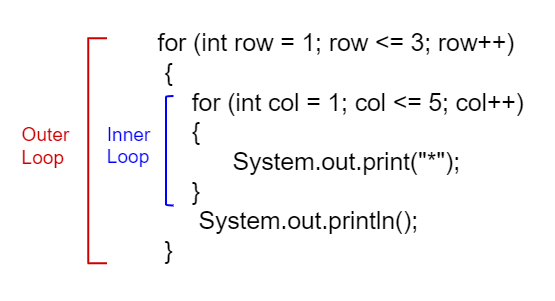When working in two dimensions, they are usually used to print stars in rows and columns, as the example below illustrates. Every time the outer loop iterates, the inner loop will begin anew. 
Visited 1 times, 1 visit(s) today
When working in two dimensions, they are usually used to print stars in rows and columns, as the example below illustrates. Every time the outer loop iterates, the inner loop will begin anew. 

IT Carrier build